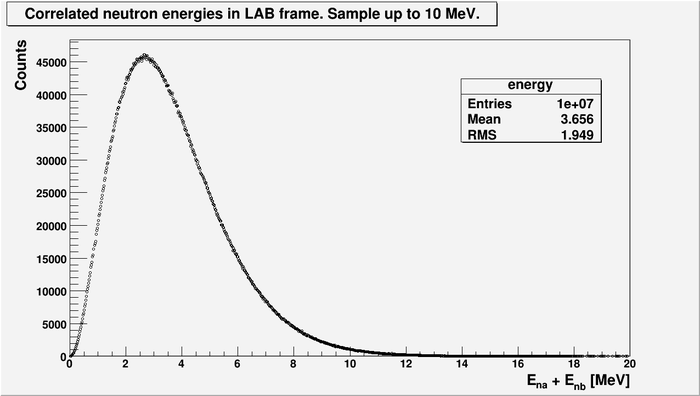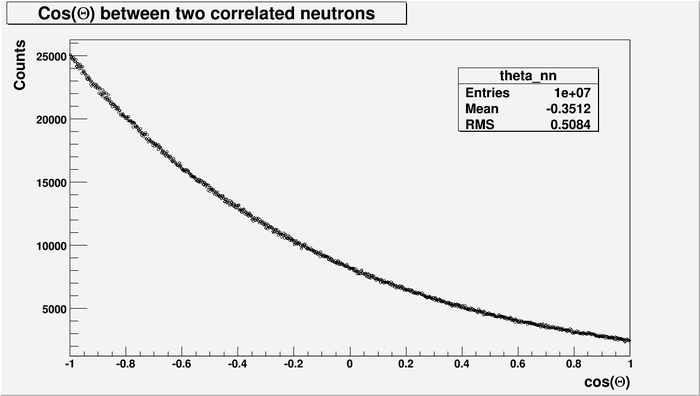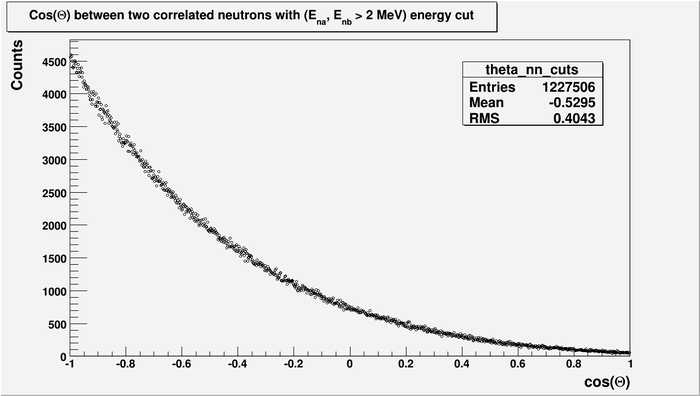Cos(Theta) between two correlated neutrons. Unpolarized case.
Jump to navigation
Jump to search
Below is the energy spectrum of two correlated neutrons in LAB frame.
- 10 million events total
- Sampled up to 10 MeV.
Below is between two correlated neutrons.
- Integrated over all energy spectrum.
- No energy cut was made.
And with energy cut.
The calculated asymmetry from the last plot is:
here:
- are all events with angle between two neutrons is
- are all events with angle between two neutrons is
that corresponds the 90 cm long detector located about 2 m away from target that is pretty good for time of flight technique.
Also my Yields are:
Looks good, but we need big statistics!


